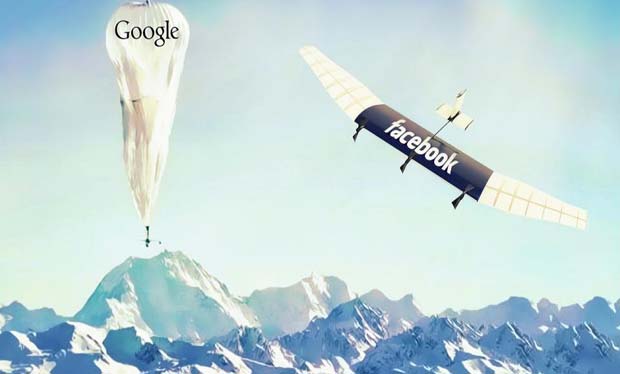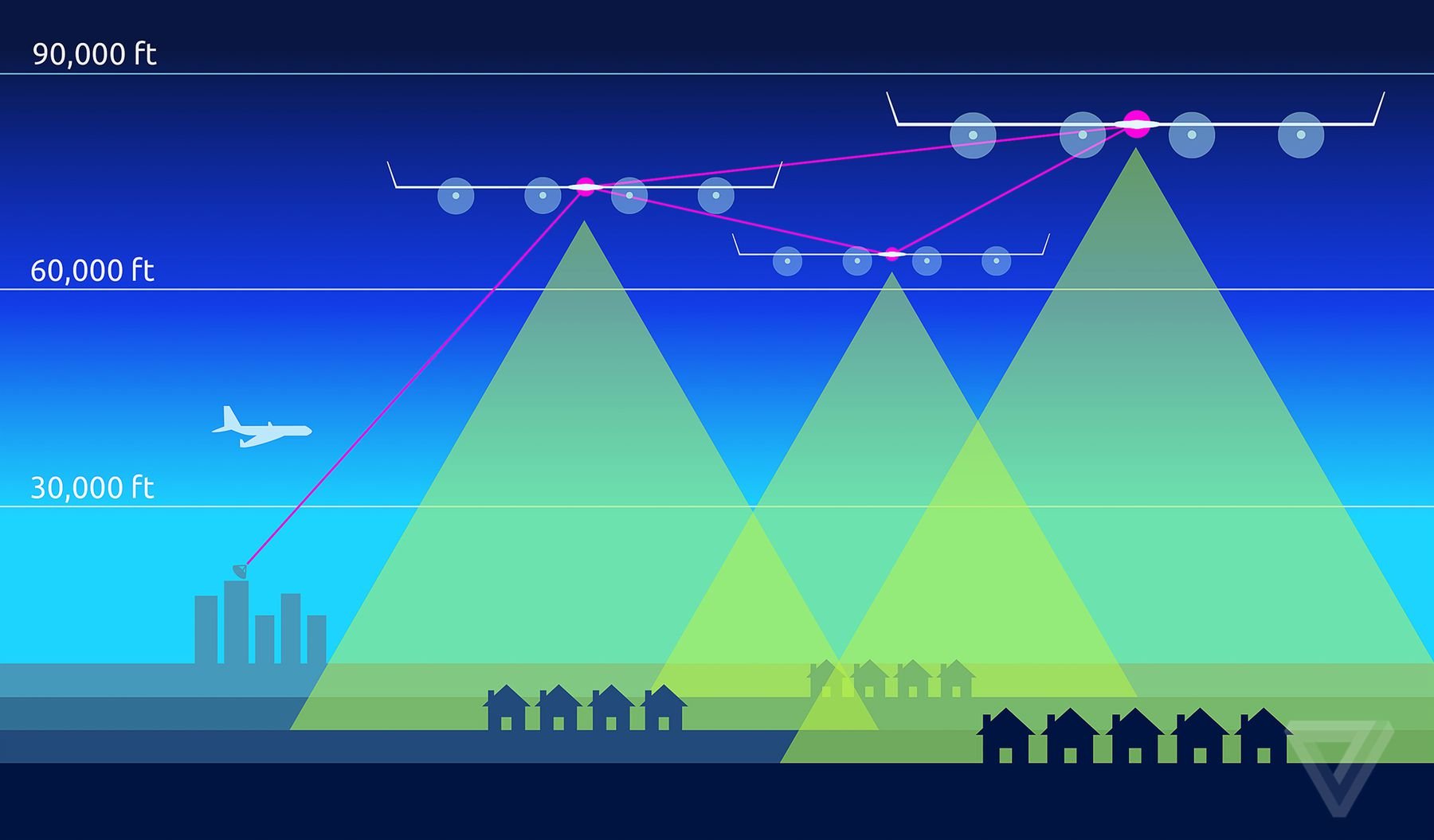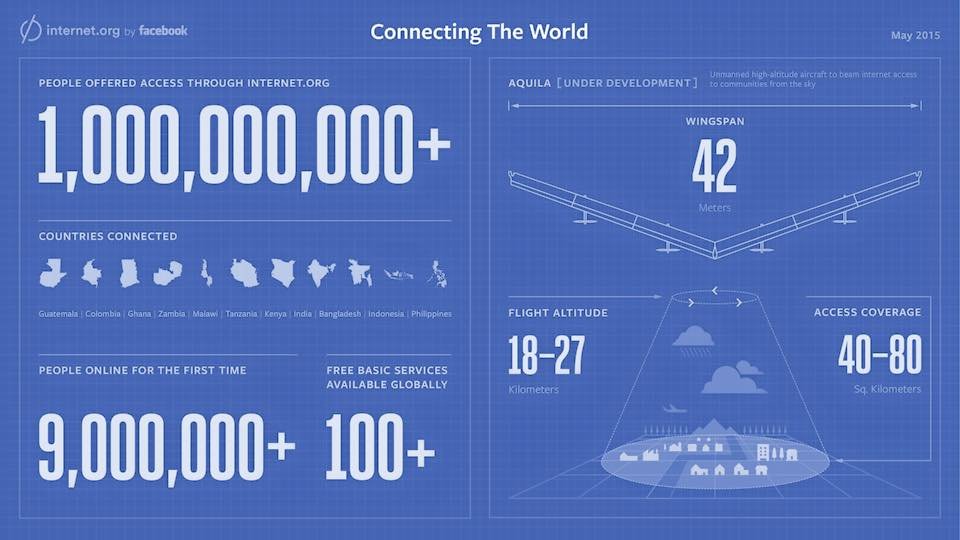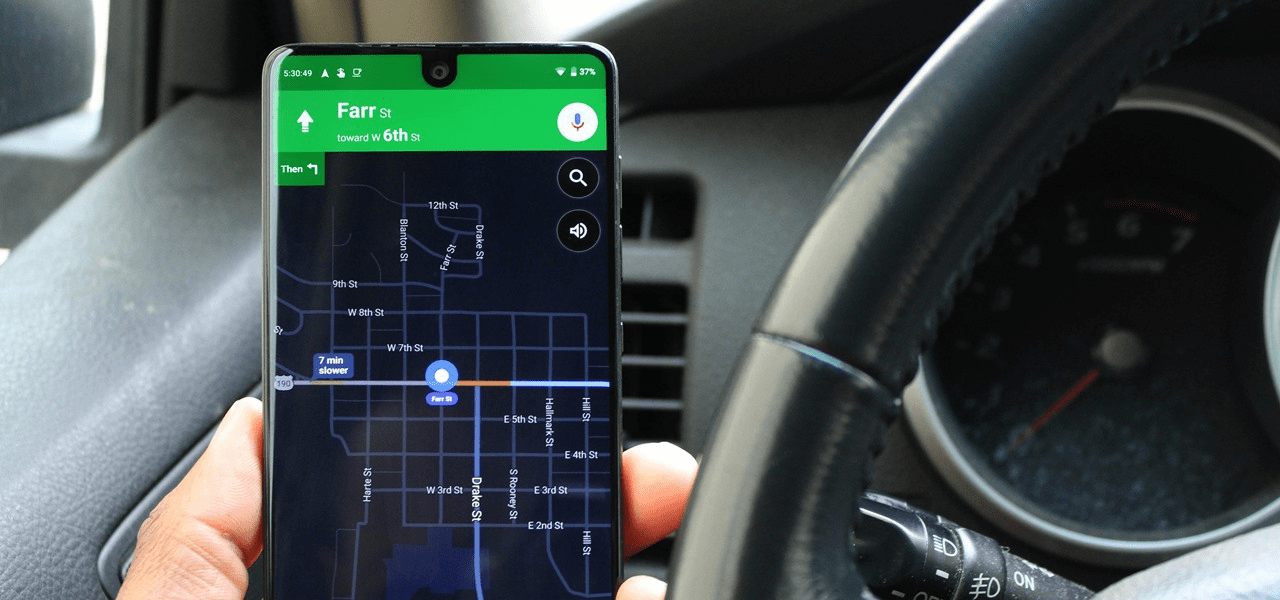
It’s called Project Aquila and ultimately, there will be a fleet of unmanned drones staying in flight for “months at a time“.
The project aims to improve the world’s access to internet, especially in remote areas.

Facebook’s Solar-Drone Provides Internet With Lasers
“For Facebook, Aquila is more than a proof of concept. It’s a linchpin of the company’s plan to bring the internet to all 7 billion people on Earth, regardless of their income or where they live. Doing so will lift millions of people out of poverty, Zuckerberg says, improving education and health globally along the way. But it will also enable the next generation of Facebook’s services in artificial intelligence, virtual reality, and more. This next era of tech will require higher bandwidth and more reliable connections than we have today, and drones can help deliver both. The road to a VR version of Facebook begins where Aquila leaves the runway.”-The Verge
The main purpose of project Aquila is to provide internet access to remote areas.
The drone will be flying 60,000-90,000 feet in the air, and provide internet access below using laser technology.
There will be several drones that keep in contact so that there is widespread internet coverage below.
“When Aquila is ready, it will be a fleet of solar-powered planes that will beam internet connectivity across the world. Today, more than half the world’s population — 4 billion people — still can’t access the internet. One day, Aquila will help change that.”-Mark Zuckerberg

Facebook’s Solar-Drone Provides Internet With Lasers
Specifications
The drone has a wingspan comparable to a Boeing 767, but it’s made from carbon fibers which are extremely lightweight – this makes the total weight even less than a smart car.
The limited weight is important because the drone is supposed to be in the air for up to 3 months at a time, only using solar power.
During the day, the solar panels collect the sunlight and store it for the evening hours.
The aircraft will move with the relatively slow speed of 129 km/h due to efficiency reasons, and its cruising altitude will be around 18,000 meters.

Facebook’s Solar-Drone Provides Internet With Lasers
Test flights
The project had been announced in 2015, but Aquila only completed 2 test flights until now.
The first one resulted in a structural failure – but the 2nd test flight was a success!
It occured at the end of may, with a total flight time of 1 hour and 46 minutes and an altitude of over 3,000 feet.
The drone climbed 2 times as fast as on the first test flight – 180 feet/minute.
Challenges
There are still several challenges to overcome until the Aquila drones will actually stay aloft for 90 days.
For example, the solar panels – during the test flights, the prototype aircrafts were only using batteries.
The manufacturers are also still working on building batteries that could sustain missions as long as 3 months.
Cost is another main factor: if Facebook really wants to deploy a whole fleet of these drones, the overall cost would have to be reduced greatly.
“We need to develop more efficient on-board power and communication systems; ensure the aircraft are resilient to structural damage to reduce maintenance costs and able to stay aloft for long periods of time to keep fleet numbers low; and minimize the amount of human supervision associated with their operation”-Andy Cox, mechanical engineer







